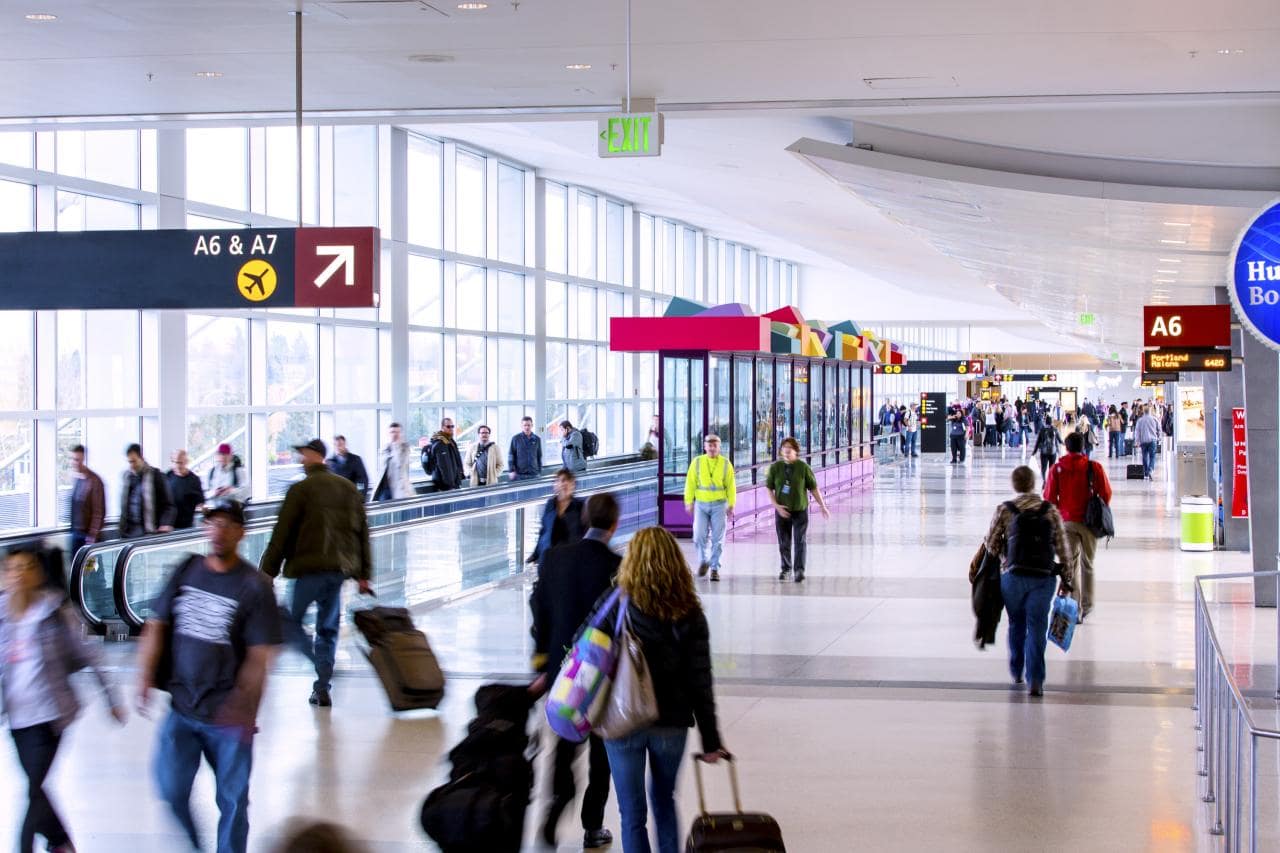
Air travel is slowly picking up across the globe as Covid-19 restrictions are gradually being lifted. This is good news for those wanting to go on a summer holiday, and for the airports and airlines too, as aviation has been one of the industries worst hit by the pandemic.
Unfortunately for travellers, there are long wait times and new security checks that passengers will have to undertake, which, paired with Covid-19 testing protocols, are expected to cause significant delays.

Discover B2B Marketing That Performs
Combine business intelligence and editorial excellence to reach engaged professionals across 36 leading media platforms.
To combat these long queues and wait times, Seattle-Tacoma Airport (SEA) has started a new virtual queuing technology, which will allow passengers to go through the TSA screening process without having to stand in lengthy lines.
The programme, SEA Spot Saver, aims to modernise the passenger experience allowing for virtual queueing, security screening, touchless check-in, and bag drop-off. The inclusion of this new tech sees SEA becoming one of the first airports in the US to trial a virtual queueing system in a hope to get lines of passengers moving again.
SEA, senior manager terminal operations, Dan Zenk, explained the new technology and how it aims to improve customer experience.

US Tariffs are shifting - will you react or anticipate?
Don’t let policy changes catch you off guard. Stay proactive with real-time data and expert analysis.
By GlobalDataFrankie Youd (FY): Could you provide an outline for the two new technologies being included at the airport?
Dan Zenk (DZ): Both are free, reservation-based systems for TSA general screening security checkpoints for those not in trusted traveller programs like PreCheck or CLEAR. One system is through checkpoint 2 that is text-based, the other is at checkpoint 5 for Alaska Airline passengers through an online web form. There is no membership needed or additional information.
The system at checkpoint 2 asks travellers on-site to scan a QR code, which sends a message, asks a few questions and then confirms a time for entry through the checkpoint. Checkpoint 2 is focused with Delta Air Lines passengers and users of other airlines.
The web-based form system for checkpoint 5 allows Alaska Airline customers to sign-up on-site or as far as 24 hours ahead of their flight online. Passengers can use a QR code on-site or signup online ahead of time and be given a specific time to show up to enter the checkpoint.
Travellers can think of it like a restaurant, where they call ahead for a reservation in one system, while the other works after they arrive and alerts passengers when their seat is ready. Either way, this allows passengers to check bags, grab a drink, spend more time with loved ones before you depart, or all of the above.
FY: Was the inclusion of this technology being considered prior to last year or did the pandemic act as a catalyst for its inclusion?
DZ: This was in the works before the pandemic. SEA Airport is always looking for innovations to help the traveling public and this opportunity came together when the technology was developed and the two companies participating are piloting the advancement over the summer.
FY: SEA is one of the first airports in the U.S. to investigate a virtual queuing system, how did this idea come about?
DZ: The concept has been brought up before, but it was accelerated with the emergence of the pandemic. This brought in the complexities of the Covid-19 social distancing requirement, facility constraints, and in anticipation of the return of passengers as the economy recovered. SEA is one of the first airports in the US to investigate a ‘virtual queuing’ system as a solution for crowded general screening lines.
FY: Has this technology been created in house or have external companies assisted the development?
DZ: Two external vendors are piloting products for 120 days. The pilot program will test if SEA Spot Saver successfully reduces wait times and crowding to better maintain physical distancing. The pilot runs daily between 4 am to noon through 31 August. These are the busiest times for checkpoints at SEA which can see between 40-50% of our daily traffic.
FY: How does this technology aim to improve customer experience as well as assist those working at the airport?
DZ: The technology is aimed at helping reduce the length of time travellers have to wait in line at security checkpoints, freeing them up to do other things before finding their space in the queue lines and, ideally, reducing the overall wait time for the traveller.
From a staff standpoint, this could reduce some of the need to manage long lines while providing better customer service for the traveller.
FY: What does the test of the technology hope to achieve?
DZ: The pilot program has already started and is set to go through the end of August. At that time SEA Airport will evaluate the results and determine next steps.
We are encouraging travellers who use the system to provide comments on their experience and staff will monitor the operations to make necessary adjustments as we learn what works and what doesn’t within the processes. We expect virtual queuing will enhance and provide a predictable passenger journey from now until well after Covid-19 is over.





